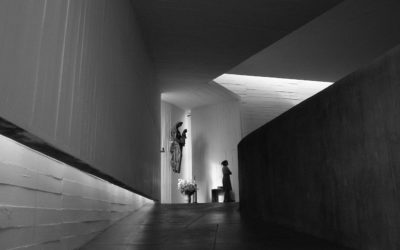The definitions of the words architecture and design do not mean the same for everyone. The characteristics, components, and actors of these either. The little or much that we can know about these two artistic disciplines has been built in the collective (of the people) imaginary (mind) through their own construction of culture often influenced by the media.
Let us start by defining “Collective Imaginary”. It is a concept of the so-called social sciences, coined by the French philosopher and sociologist Edgar Morín in 1960, which designates the set of myths and symbols, which effectively function as a social-collective “mind” (proper to the mind). His theory says that the ideas represented by these myths (words) and symbols (facts) are promoted both in their real dimension and in their imaginary dimension (transfers and projections) by the media; and it makes us identify them in consumer products and media personalities (social, political or religious leaders and celebrities). These social – collective ideas develop in turn in archetypes such as the worker, the professional, the madman or the thief; or universal themes such as love, time, or youth.
The idea we have of architecture has changed a lot over the time. Since it appeared in Ancient Greece it has been considered as an art, but the concept of art is the one that has changed. Architecture is art because it is included as one of the Classical Fine Arts: architecture, sculpture, painting, music, declamation and dance), “it is the art and technique of projecting, designing and constructing buildings, modifying the human habitat and studying the aesthetics, the proper use and the function of spaces, whether architectural or urban ”… At present, it is not enough that architecture is beautiful, it must be original, creative, and expressive.
It is a wrong idea to believe that the only person responsible for architecture is the architect, we must not forget the designers and workers, but above all the teachers who are the ones who can create the artists. It then becomes essential to understand the media influence in the development of the collective consciousness of what this art is and how its creation processes, production, diffusion and consumption are carried out.
They are the (specialized) magazines, websites and blogs, commercial catalogs, thematic exhibitions, advertising, and not only educational texts that can be considered sources to understand architecture in its full dimension. The architectural work itself communicates, but it is necessary to go to the place where it is to contemplate the work, that is why the architect and architecture need the media to have contact with the population so that the work is understood in daily life. This mediatization of architecture is what creates the collective imagination that the work belongs to the architect, but we know that this is not really the case.
And what is our vision of the design? It really is a broad concept. For the purposes of this text, we can define it as the prior process of mental configuration, in the search for a solution in any field and that is applied especially in the fields of industry, engineering, architecture, communication and other disciplines that require creativity. . This search for the solution is reflected through sketches, drawings, sketches, or diagrams. The act of designing is not an artistic fact, although it can use the same thought processes and the same means of expression as a result.
Over time the values assigned to the meaning of design have changed. Nowadays what matters is the artistic nature of design (more than its practicality), this assessment began to be given in the mid-nineteenth century, with Romanticism where the artist ideas were valued more than their skills. And it is that unlike the other arts, design (in this case architectural) is not an end in itself, it is a means of production that allows to reach a final goal: the construction of an object: house, school, temple or building.
As you can see, the perception we have of a concept or thing can be different from that of another person and vary over time, be formed as a result of our influences and develop in a certain way according to our context or environment. And the ideas that we have of architecture and design are no exception, creativity being the factor that unites these two arts, sciences or disciplines that seek a common goal, the practical beauty of an object or place.
Sources :
Magazine 925 : http://revista925taxco.fad.unam.mx/index.php/2019/02/07/el-imaginario-colectivo-y-la-percepcion-de-nuestro-entorno/
University of Palermo: Faculty of Design and Communication
Web Arqa: Reflections on architecture






0 Comments